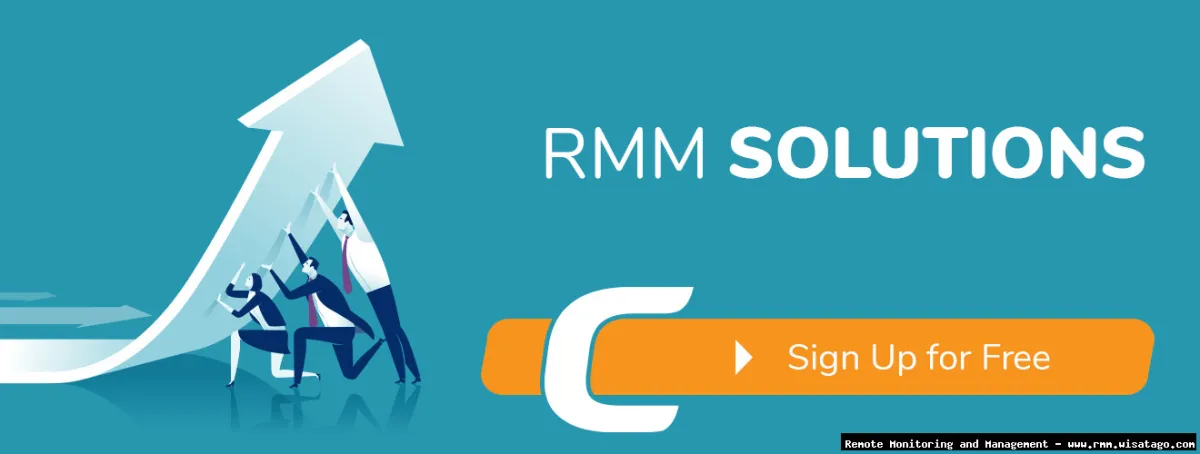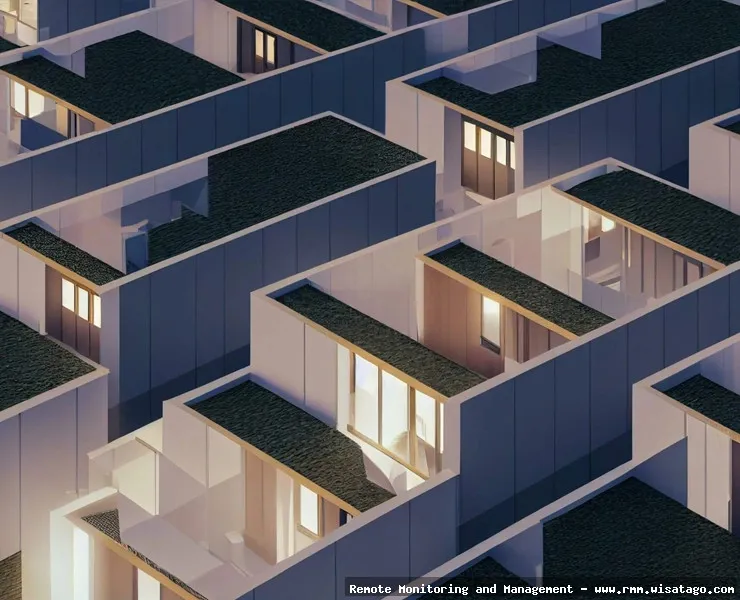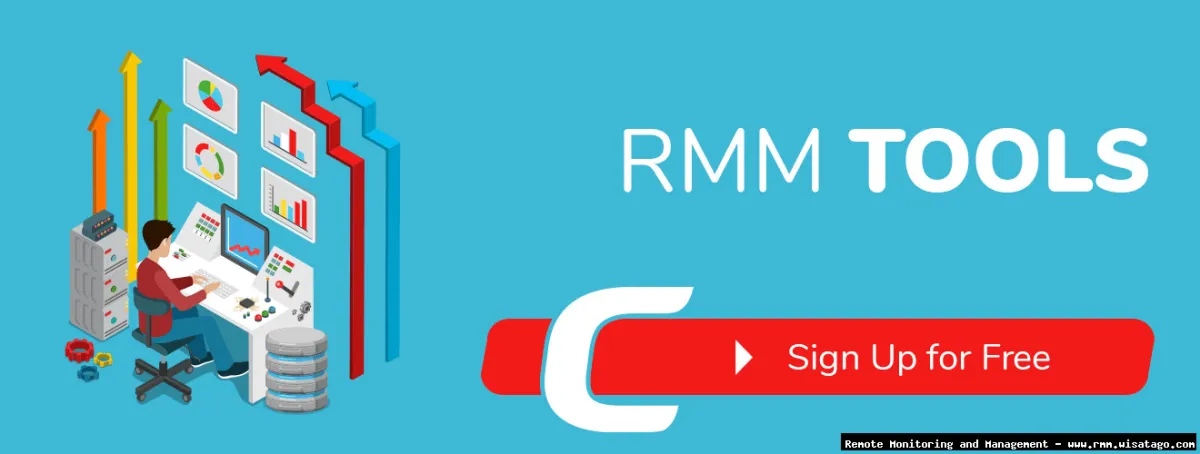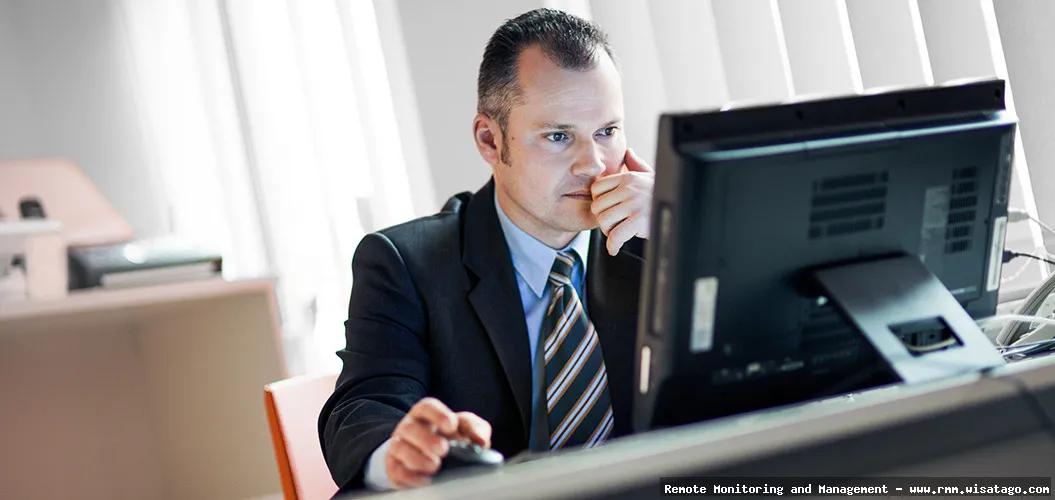In the ever-evolving landscape of IT services, efficiency and scalability are the cornerstones of success, especially for Managed Service Providers (MSPs). As an IT professional, you understand the daily grind of juggling multiple clients, each with their unique infrastructure and needs. Imagine a world where you could manage all these clients from a single, centralized platform, proactively addressing issues before they escalate and streamlining your operations. That’s the promise of multi-tenant Remote Monitoring and Management (RMM) solutions, and it’s a game-changer for MSPs.
Multi-tenant RMM isn’t just about managing multiple customers; it’s about doing it smarter, faster, and more efficiently. It allows you to monitor the health of your clients’ systems, deploy patches and updates remotely, automate routine tasks, and provide real-time support, all from a single pane of glass. This centralized approach not only reduces your workload but also improves your service quality, leading to happier clients and a more profitable business. Think of it as having a dedicated IT superhero team, working tirelessly behind the scenes to keep your clients’ businesses running smoothly.

This article will delve into the world of multi-tenant RMM solutions, providing a comprehensive guide to their features, benefits, and considerations for implementation. Whether you’re a seasoned MSP veteran or just starting out, this guide will equip you with the knowledge you need to make informed decisions and leverage the power of RMM to transform your business. We’ll explore the core functionalities, discuss the advantages of a multi-tenant architecture, and highlight the key factors to consider when choosing the right RMM solution for your specific needs. Let’s dive in!
What is Multi-Tenant RMM?
At its core, Remote Monitoring and Management (RMM) is a software platform designed to help IT professionals remotely monitor, manage, and support their clients’ IT infrastructure. The “multi-tenant” aspect refers to the architecture of the RMM solution, which allows a single instance of the software to serve multiple clients or tenants, each with their own isolated data and configurations. Think of it like an apartment building: the building itself is the RMM platform, and each apartment represents a separate client environment. Each tenant has their own space, but the building owner (the MSP) can manage the entire property from a central location.
Key Characteristics of a Multi-Tenant RMM Solution:
- Centralized Management: A single dashboard provides a consolidated view of all client environments, simplifying monitoring and management.
- Scalability: The platform is designed to easily scale to accommodate new clients and growing infrastructure.
- Security: Robust security measures ensure that each client’s data is isolated and protected from unauthorized access.
- Automation: Automation features streamline routine tasks, such as patch management, software deployment, and system maintenance.
- Reporting: Comprehensive reporting capabilities provide insights into system performance, security threats, and other key metrics.
Benefits of Using a Multi-Tenant RMM Solution
The advantages of adopting a multi-tenant RMM solution are numerous, especially for MSPs striving for efficiency and profitability. Here are some key benefits:
Increased Efficiency and Productivity
By centralizing management and automating routine tasks, RMM solutions free up IT professionals to focus on more strategic initiatives. Instead of manually checking each client’s systems, you can rely on automated alerts and reports to identify potential issues. This proactive approach not only reduces downtime but also improves overall productivity.
Reduced Costs
Multi-tenancy allows MSPs to leverage economies of scale, reducing the overall cost of IT management. By sharing a single software instance across multiple clients, you can avoid the expense of deploying and maintaining separate systems for each client. Furthermore, automation features can significantly reduce labor costs by automating tasks that would otherwise require manual intervention.
Improved Service Quality
RMM solutions enable MSPs to provide faster and more reliable service to their clients. Real-time monitoring and alerting allow you to identify and resolve issues before they impact end-users. Remote access capabilities enable you to quickly troubleshoot problems without having to physically visit the client’s site. This rapid response time can significantly improve client satisfaction and loyalty.
Enhanced Security
Multi-tenant RMM solutions often include advanced security features, such as vulnerability scanning, patch management, and endpoint protection. These features help protect your clients’ systems from cyber threats and ensure compliance with industry regulations. Centralized security management allows you to quickly deploy security updates and policies across all client environments, reducing the risk of a security breach.

Scalability and Flexibility
As your business grows, a multi-tenant RMM solution can easily scale to accommodate new clients and expanding infrastructure. The platform is designed to handle a large number of devices and users, without compromising performance or stability. This scalability allows you to take on new clients and expand your service offerings without having to invest in additional hardware or software.
Key Features to Look for in a Multi-Tenant RMM Solution
Choosing the right RMM solution is crucial for maximizing its benefits. Here are some key features to consider:
Remote Monitoring and Alerting
This is the core functionality of any RMM solution. Look for features that allow you to monitor the health and performance of servers, workstations, network devices, and other IT assets. The system should provide real-time alerts when issues are detected, allowing you to proactively address problems before they escalate.
Patch Management
Keeping software up-to-date is essential for security and stability. A good RMM solution should automate the process of patching operating systems, applications, and other software. Look for features that allow you to schedule patches, approve or reject updates, and track patch deployment status.
Remote Access and Control
Remote access capabilities are essential for troubleshooting and resolving issues remotely. Look for features that allow you to securely access and control client devices from anywhere with an internet connection. This can significantly reduce travel time and improve response times.
Automation and Scripting
Automation is key to streamlining routine tasks and improving efficiency. Look for features that allow you to automate tasks such as software deployment, system maintenance, and user management. Scripting capabilities allow you to create custom scripts to automate more complex tasks.
Reporting and Analytics
Comprehensive reporting and analytics provide insights into system performance, security threats, and other key metrics. Look for features that allow you to generate reports on a regular basis, track key performance indicators (KPIs), and identify areas for improvement.

Security Features
Security is a top priority for any MSP. Look for RMM solutions that include advanced security features, such as vulnerability scanning, endpoint protection, and security information and event management (SIEM) integration. These features can help protect your clients’ systems from cyber threats and ensure compliance with industry regulations.
Integration with Other Tools
Ideally, your RMM solution should integrate seamlessly with other tools you use, such as ticketing systems, PSA (Professional Services Automation) platforms, and CRM (Customer Relationship Management) systems. This integration can streamline workflows, improve communication, and provide a more holistic view of your business.
Challenges of Implementing a Multi-Tenant RMM Solution
While multi-tenant RMM solutions offer numerous benefits, there are also some challenges to consider during implementation:
Data Security and Privacy
Ensuring the security and privacy of client data is paramount. You need to choose an RMM solution that has robust security measures in place to protect against unauthorized access and data breaches. You also need to comply with relevant data privacy regulations, such as GDPR and HIPAA.
Complexity and Learning Curve
RMM solutions can be complex, and there may be a learning curve for your IT staff. You need to invest in training and documentation to ensure that your team can effectively use the platform. You also need to carefully configure the system to meet the specific needs of your clients.
Integration Challenges
Integrating your RMM solution with other tools can be challenging, especially if you have a complex IT environment. You need to carefully plan the integration process and ensure that all systems are compatible. For more information, you can refer to RMM as an additional resource.
Vendor Selection
Choosing the right RMM vendor is crucial for success. You need to carefully evaluate different vendors and choose a solution that meets your specific needs and budget. Consider factors such as features, pricing, support, and reputation.

Choosing the Right Multi-Tenant RMM Solution
Selecting the ideal RMM solution for your MSP requires careful consideration of your specific needs and goals. Here’s a breakdown of the key factors to keep in mind:
Assess Your Needs
Before you start evaluating different RMM solutions, take the time to assess your specific needs. What are your current pain points? What features are most important to you? What is your budget? Answering these questions will help you narrow down your options and choose a solution that is a good fit for your business.
Compare Different Solutions
Once you have a clear understanding of your needs, start comparing different RMM solutions. Look at the features, pricing, support, and reputation of each vendor. Read reviews and talk to other MSPs to get their feedback.
Consider Scalability
Choose an RMM solution that can scale to accommodate your growing business. The platform should be able to handle a large number of devices and users without compromising performance or stability.
Evaluate Security Features
Security should be a top priority. Choose an RMM solution that includes advanced security features to protect your clients’ systems from cyber threats.
Request a Demo
Before you make a final decision, request a demo of the RMM solution. This will allow you to see the platform in action and get a feel for how it works. It will also give you the opportunity to ask questions and get clarification on any concerns you may have.
Conclusion
Multi-tenant RMM solutions are essential tools for modern MSPs. They offer a centralized, efficient, and scalable way to manage multiple clients’ IT infrastructure, improving service quality, reducing costs, and enhancing security. By carefully evaluating your needs and choosing the right RMM solution, you can transform your business and achieve greater success.

Remember to prioritize security, scalability, and integration when making your decision. Invest in training and documentation to ensure that your team can effectively use the platform. And don’t be afraid to ask questions and seek support from your vendor.
With the right RMM solution in place, you can streamline your operations, improve client satisfaction, and focus on growing your business. Embrace the power of multi-tenant RMM and unlock the full potential of your MSP!
Conclusion
In conclusion, multi-tenant RMM solutions represent a vital cornerstone for modern service providers seeking to thrive in a competitive landscape. By centralizing management, automating tasks, and offering scalable infrastructure, these platforms empower MSPs to deliver superior services, reduce operational overhead, and ultimately, enhance profitability. The ability to efficiently manage numerous clients from a single interface unlocks significant time savings and allows for a more proactive approach to IT management, shifting from reactive firefighting to preventative maintenance and strategic planning.
The key takeaway is that selecting the right multi-tenant RMM is a strategic decision that can dramatically impact an MSP‘s success. We’ve explored the core functionalities, benefits, and essential considerations for choosing the optimal solution. As you evaluate your options, remember to prioritize features that align with your specific business needs and growth objectives. Ready to take the next step? We encourage you to explore the leading RMM providers and schedule demos to experience firsthand the power of a well-implemented multi-tenant RMM solution. Consider starting your research with a review of this detailed RMM comparison guide to find the perfect fit for your organization.
Frequently Asked Questions (FAQ) about Multi-Tenant RMM Solutions for Service Providers
What are the key benefits of using a multi-tenant RMM solution for my managed service provider (MSP) business?
A multi-tenant RMM (Remote Monitoring and Management) solution offers numerous advantages for MSPs. Firstly, it provides centralized management of multiple client environments from a single console, significantly improving efficiency and reducing administrative overhead. This allows technicians to manage more endpoints with less effort. Secondly, multi-tenancy facilitates scalability, enabling MSPs to easily onboard new clients and expand their service offerings without requiring substantial infrastructure investments. Thirdly, it promotes standardization of processes and security policies across all clients, ensuring consistent service delivery and minimizing security risks. Finally, it often leads to cost savings, as the shared infrastructure reduces the overall IT expenses compared to managing separate RMM instances for each client. This allows MSPs to remain competitive in the market.
How can a multi-tenant RMM platform help me improve security for my clients and my own MSP infrastructure?
A multi-tenant RMM platform enhances security through several mechanisms. It enables MSPs to implement standardized security policies across all client environments, ensuring a baseline level of protection for everyone. This includes consistent patching, antivirus management, and firewall configurations. Furthermore, RMM solutions offer real-time monitoring of security threats and vulnerabilities, allowing for proactive detection and remediation. Automated security tasks, such as software updates and vulnerability scans, can be scheduled and executed centrally, reducing the risk of human error and ensuring timely protection. Integrated reporting provides visibility into security posture across all clients, enabling MSPs to identify and address potential weaknesses. Finally, many RMMs offer built-in security features like two-factor authentication and role-based access control, protecting both the client’s and the MSP’s own infrastructure from unauthorized access.
What features should I look for when evaluating multi-tenant RMM software for my IT service business, and how do I choose the right one?
When evaluating multi-tenant RMM software, consider features like remote access capabilities (fast and secure), patch management automation, monitoring and alerting (customizable thresholds), reporting and analytics (for performance and security insights), and integrated scripting for automation. Crucially, ensure the RMM supports robust security features like two-factor authentication and role-based access control. Consider the integration capabilities with other tools you use, such as PSA (Professional Services Automation) software and ticketing systems. To choose the right one, start by defining your specific needs and budget. Read reviews and compare features of different RMM solutions. Request demos from multiple vendors to get hands-on experience. Finally, consider the vendor’s support and training options, as a reliable vendor can significantly impact your success with the RMM platform.